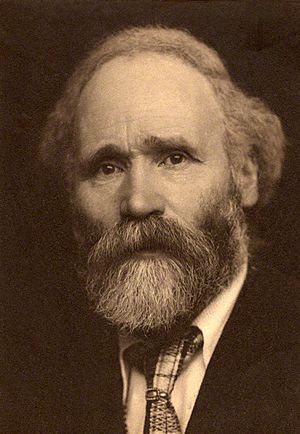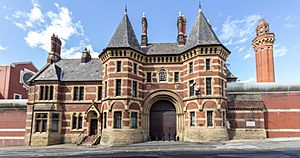Catherine Tolson facts for kids
Catherine Tolson (born August 21, 1890 – died March 3, 1924) was an English nurse and suffragette. She came from Ilkley in West Yorkshire. Catherine was an active member of the Women's Social and Political Union (WSPU). This group fought for women's right to vote. She was arrested and sent to prison in 1909 and 1911. During her time in prison, she went on a hunger strike to protest. She was then force-fed. Because of her bravery, she received a special Hunger Strike Medal from the WSPU. This medal was later sold at an auction in 2004.
Fighting for Women's Rights
Catherine, also known as "Kitty," Tolson was born in Ilkley in West Yorkshire in 1890. Her father, Charles Guthrie Tolson, was a merchant. Her mother was Anna Dymond. Catherine's older sister, Helen Tolson, and her mother were also suffragettes.
Catherine joined the Women's Social and Political Union (WSPU). This made her a strong campaigner for women's suffrage, which means women's right to vote. In September 1909, Catherine and her sister Helen were arrested. They were among suffragettes who broke windows at White City in Manchester. They chose to go to prison in Strangeways Prison instead of paying fines.
Just two days later, they were set free from Strangeways. This happened because they went on a hunger strike. For this brave act, Catherine received a Hunger Strike Medal from the WSPU.
In October 1909, Catherine was arrested again in Manchester. She was sent back to Strangeways Prison. How she was released this time caused a stir. Keir Hardie, a Member of Parliament, asked questions about it in the House of Commons. He wanted to know why Catherine and two other women were let out late at night. They were left on the street when their offices were closed.

The government official, Herbert Gladstone, explained the situation. He said the prison governor let them out early to stop any public demonstrations. The governor had heard that the WSPU knew when they were supposed to be released. So, he changed the plan to avoid a crowd.
In April 1911, Catherine, her sister Helen, and their mother Anna traveled to New York. They visited via the West Indies. Their sister-in-law, Mrs. M F E Tolson, also joined them. All of them were suffragettes who had been in English jails. Mrs. Tolson said their trip was just a holiday. They would not do any suffragette work in New York.
Protest and Force-Feeding
In 1909, Catherine Tolson, who was 19, joined a protest. This was after Mary Leigh had been force-fed. Catherine protested with Emily Davison, Helen Liddle, and Hannah Shepperd. They were protesting against Sir Walter Runciman in Radcliffe.
Women were not allowed into the meeting. So, the four women held their own meeting. They stood on the back of a lorry. Police had to rescue them when a group of young people tried to push the lorry down a hill. After this, the women caused some damage. They threw notes attached to stones through windows. These were at the Radcliffe Liberal Club and the local post office.
At their trial, Catherine, Helen Liddle, and Hannah Shepperd were sentenced to one month in prison. They had to do hard labor. Emily Davison received two months because she had been arrested before. All four women immediately started a hunger strike. They were force-fed during their time in prison. Emily Davison even blocked her cell door with beds. She was sprayed with a firehose for 15 minutes through her cell window.
Catherine Tolson died at age 34 from tuberculosis. She never married. In 1909, she received a Hunger Strike Medal 'for Valour' from the WSPU. This medal was sold at an auction in 2004.
See also
 In Spanish: Catherine Tolson para niños
In Spanish: Catherine Tolson para niños


